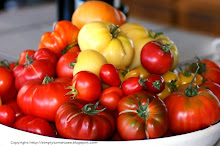Trap Cropping - Examples are planting nasturtium or collards with cabbage and broccoli. Aphids are attracted to the nasturtium or collard more than the cabbage.
Symbiotic Nitrogen Fixation - Legumes can “fix” atmospheric nitrogen thus improve the fertility of the soil. Examples are using cover crops of clover, alfalfa or vetch in an orchard or planting beans and corn together.
Biochemical Pest Suppression - The companion plant releases a chemical that mimics a fright or scatter hormone of an unwanted pest thus repelling it. At the same time, that chemical attracts beneficial insects. An example is the Marigold, which repels aphids but attracts Hover flies whose larvae feed on aphids.
Physical/Spatial Interactions - Planting in levels to produce more food in less space.
Beneficial Habitats - Provide food plants for beneficial insects such as ladybugs, ichneumon wasps and hover flies by interplanting or using borders and backdrops.
The 3 Sisters planting in a Native American garden is a perfect example of companion planting. Corn, beans and squash are all interplanted. The beans use the corn stalks for support and shade the young ears from burning. The nitrogen fixed by the beans provides additional nutrition for the corn. The squash at the feet of the corn and beans receives the benefit of shaded soil so its roots stay cooler and moister and the beans repel squash vine borers. The squash, being a somewhat prickly vine, keeps varmints away from the ripening corn and beans!
ANISE
A good host for predatory wasps - also repels aphids. Deters pests from brassicas (cabbage, broccoli, etc) by camouflaging their odor.
BASIL
Plant with tomatoes to improve growth and flavor. Repels flies and mosquitoes.

BEANS
All beans enrich the soil by fixing nitrogen. They are good for planting with all vegetables EXCEPT for Alliums (onions, garlic, leeks). Summer savory repels bean leaf beetles and will improve the beans flavor.
BEE BALM
Lures bees and Hummingbirds to the garden for better pollination. Improves the growth and flavor of tomatoes.
BEETS
Good for adding minerals to the soil. Good companions are lettuce, onions and Brassicas. DO NOT plant with beans, as they will stunt each other’s growth.
BORAGE
Good to plant with tomatoes, squash and strawberries. It will deter

hornworm and cabbage looper. Adds trace minerals to the soil and attracts bees and ichneumon wasps. Borage will benefit almost any plant it is growing near by increasing its resistance to disease and pests.
CARAWAY
Good for loosening compacted soil so it benefits all shallow rooted crops. Attracts beneficial insects.
CATNIP/CATMINT
This one deters flea beetles, aphids, squash bugs, ants and weevils. It will also repel mice!
CHAMOMILE
Improves the flavor of cabbages, onions and cucumbers. It accumulates calcium, sulphur and potassium, returning them later to the soil. It is a host for hoverflies and good wasps. Increases the production of essential oils in herbs.
CHERVIL
Improves the flavor and growth of radishes. Keeps aphids off lettuce and is said to deter snails.
CHIVES
Improves growth and flavor of carrots & tomatoes. Keeps aphids away from mums and sunflowers. When planted by roses it helps prevent black spot.
CHRYSANTHEMUM
Deters and kills root nematodes.
COMFREY
Accumulates calcium, phosphorous and potassium. A good trap plant for slugs.
CORIANDER (Cilantro)
Repels aphids, spider mites and potato beetle. A tea made from it is a good spray for spider mite.
CUCUMBERS
Works well with sunflowers, carrots, peas and beets. Planting dill nearby attracts beneficials. Nasturtiums will improve growth and flavor. Keep sage away!
DAHLIAS
Repel nematodes
DILL
Improves the growth and health of cabbage and lettuce. Plant by tomatoes to trap the tomato hornworm. Attracts many beneficials. Do not plant by caraway or carrots!
ELDERBERRY
A decoction of the leaves is an effective spray for aphid and cucumber and diabroitica beetle. Repellent to moles.
GARLIC
Plant by roses to repel aphids. Deters cabbage loopers, codling moth and peach borers.
GERANIUM
Repels Cabbage worms, corn ear worm and leafhoppers. Plant by grapes roses, corn and cabbage.
HYSSOP
Highly attractive to bees but do not plant near radishes.
LEMON BALM
Deters many bugs, especially mosquitoes and squash bugs
LOVAGE
Improves the growth and flavor of most plants. Encourages beneficial, predatory ground beetles.
MARIGOLD
Discourages beetles, whiteflies and nematodes. Acts as a trap plant for spider mites and slugs. Do not plant them by cabbage or beans.
MARJORAM
Improves the growth and flavor of all vegetables.
MINT
Deters cabbage moth, ants, rodents, aphids and fleas. Attracts hoverflies and



predatory wasps. Attractive to earthworms.
NASTURTIUM
Plant as a barrier trap around tomatoes, radishes, cabbage, cucumbers and fruit trees. Deters whiteflies and squash bugs. Good trap crop for black aphid.
ONIONS
Plant with carrots, leeks, beets, lettuce, Brassicas and strawberries. Improves other plants disease resistance. DO NOT plant with peas.
PEPPERS, HOT
Root exudates prevent root rot and Fusarium diseases of eggplants, tomatoes, swiss chard, squash and cucumbers.
ROSEMARY
Plant with cabbage, carrots, beans and sage. Deters cabbage looper and bean beetles.
TARRAGON
Beneficial to plants throughout the garden as is Thyme.
THYME
You may plant this everywhere in the garden, it is beneficial to most plants and does not interfere with other growing vegetables.
YARROW
Increases the production of other herbs essential oils. Attracts beneficial insects.








Aloha, very interesting, I love to Garden, looking forward to dropping in soon
ReplyDeleteNew Year Wishes from across the sea
Brandi